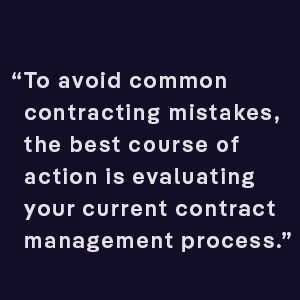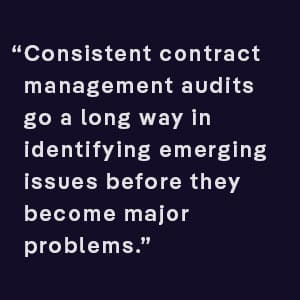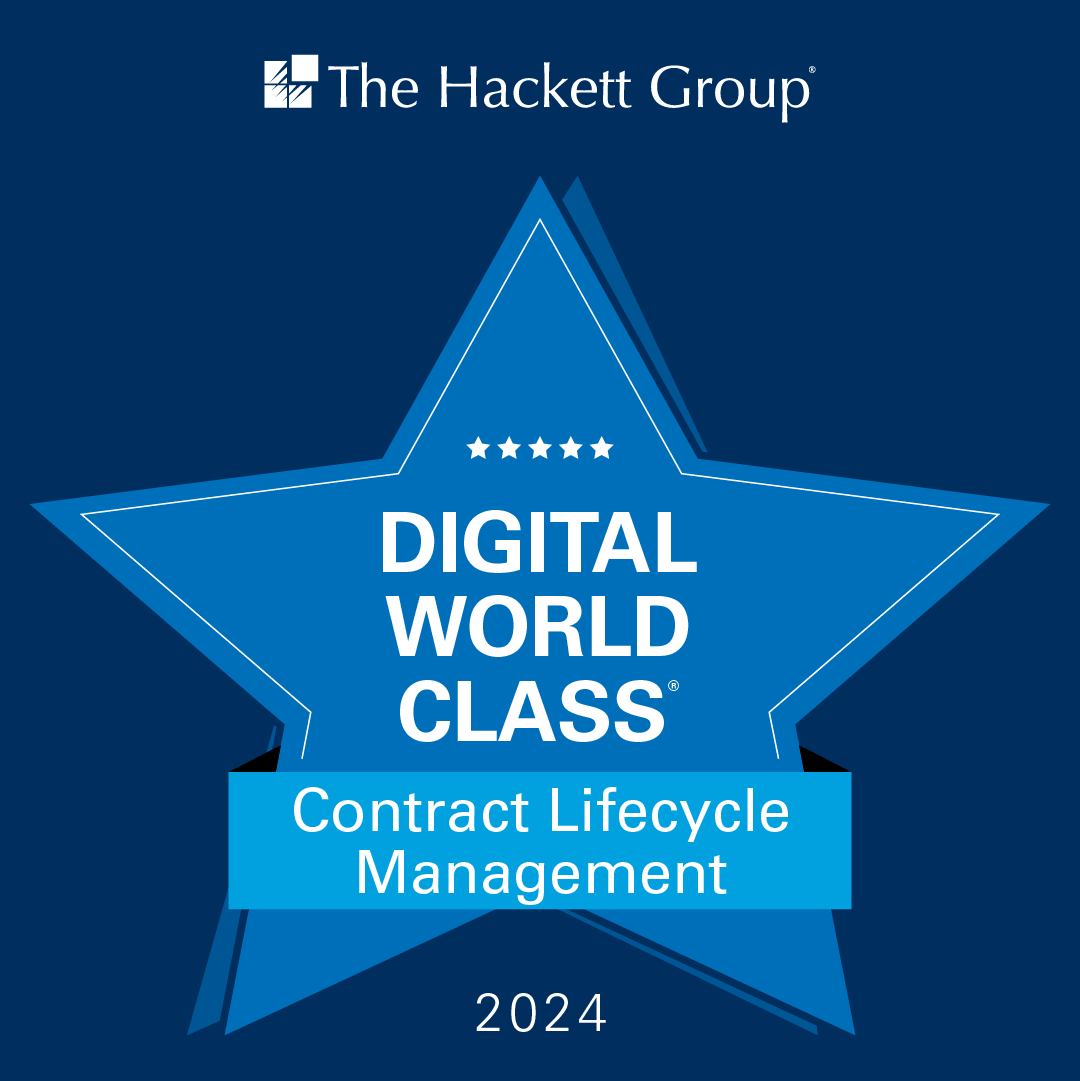Today’s agreements are the crucial means of protecting parties from undue and unnecessary risks. But creating a contract that addresses any potential liability can be a rather complex process and, therefore, should be approached with great care.
To avoid common contracting mistakes, then, the best course of action is evaluating your current contract management process. And this audit should ideally be performed quarterly, to actively reduce your liability, uncover hidden costs, prevent non-renewals, reduce risk, and improve overall compliance.
For your next contract management audit, here are a few other things to keep top of mind.
Contract Storage and Security
Once a contract is generated, it becomes a living document that needs to be easily referenced. This is so legal practitioners can keep track of the responsibilities of the parties involved, during the lifecycle of the contract. So, be aware of the length of your contract terms and compare it to your current storage provider, in case there are set time limits. Although e-signature services, like DocuSign, Adobe Sign, and others, provide an easy signing experience, they are not meant to archive your contracts given many of them do not provide permanent storage. By doing the above, though, you can ensure that signed contracts are not lost before their term is over.
You should also monitor the security of your contract storage in the event of cyberattacks. Your review of security should include whether you have backups for cloud-based contract management software. That way, your business will be covered in the event of any loss of data. Even better, consider using intelligent storage that allows you to search your contract database easily and quickly.
Important Contract Dates
As part of your self-audit, try to keep track of your company’s history of keeping to contract dates, too. Identifying missed milestones straightaway, instead of the end of the contract lifecycle — and tracking where delays are coming from on either side — will only improve the contracting process. Missed deadlines, after all, have more repercussions than just the harm to your individual reputation — they can also lead to financial and legal penalties.
Information-Sharing Procedures
Although contracts contain rather confidential information, it may be necessary for specific team members to engage with a contract over the course of its lifecycle. But given the sensitive nature of the information being shared, it is highly important to review access protocols. The good news is that by using smart archives, you can better manage access by designating view-only privileges and utilizing access logs. This is to track who has opened the contract and ensure the integrity of the original document. If your review reveals that you cannot keep track of who has viewed your contracts or which unapproved members are accessing them, then it may be time to update those protocols.
Percentage of Non-Renewals
Keeping tabs on contracts that do not get renewed, along with their lost value, is beneficial also. It is more lucrative to retain clients than tap into your marketing budget to acquire new ones. For example, exit interviews can reveal why you may be leaking clients and how to avoid the same going forward. When it comes to those successful renewals, it is best to review the contractual language to see what can help repeat that success. Some industries, of course, maybe more equipped to handle contracts set to expire. But you can improve the chances of renewal simply by being proactive and reaching out before the contract expires. And if this is already a part of your contract renewal process, you would do well to track its success rate to determine how early you need to start sending out reminders.
Contract Cycles and Cost-Effectiveness
Contracting efficiency has always been crucial to increasing companies’ revenue. Quite often, though, coming to an agreement around a binding contract takes time, with negotiations sometimes stalling altogether. Typically, the process requires multiple drafts of a contract. But figuring out how many drafts have been necessary — and how long this process has taken to get to the signature phase — helps you pinpoint the contractual language that will be most effective in the future. And reviewing the exact stage of the drafting process that has caused the most delays can reveal ways to reduce the length of the contracting cycle and improve profit margins, all at the same time.
Having a Consistent Contract Management Audit
Last but not least, evaluating the contracts held by your organization helps you verify the financial records of your vendors or partners. More consistent contract management audits go a long way in identifying emerging issues before they become major problems. For instance, an audit may reveal that a vendor regularly deviates from a particular contract, which can negatively affect the efficiency and profitability of operations. What is more, it can reveal ways to improve company processes — like including more concise contract terms — and prevent future deviations. So, make sure you define the scope and purpose of the audit, whether it is to deter fraud, prevent overbilling, improve efficiency, reduce costs, or avoid those high-risk situations.
At the end of the day, automating contract management is the key to boosting profitability, efficiency, and compliance — at every stage of the process. ContractPodAi’s One Legal Platform can help you with this. Request a demo or talk to one of our digital transformation experts today!
Author:

Jerry Levine
Connect with us on Linkedin










